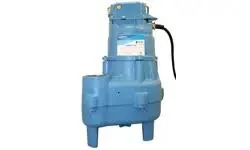English
- Afrikaans
- Albanian
- Amharic
- Arabic
- Armenian
- Azerbaijani
- Basque
- Belarusian
- Bengali
- Bosnian
- Bulgarian
- Catalan
- Cebuano
- Corsican
- Croatian
- Czech
- Danish
- Dutch
- English
- Esperanto
- Estonian
- Finnish
- French
- Frisian
- Galician
- Georgian
- German
- Greek
- Gujarati
- Haitian Creole
- hausa
- hawaiian
- Hebrew
- Hindi
- Miao
- Hungarian
- Icelandic
- igbo
- Indonesian
- irish
- Italian
- Japanese
- Javanese
- Kannada
- kazakh
- Khmer
- Rwandese
- Korean
- Kurdish
- Kyrgyz
- Lao
- Latin
- Latvian
- Lithuanian
- Luxembourgish
- Macedonian
- Malgashi
- Malay
- Malayalam
- Maltese
- Maori
- Marathi
- Mongolian
- Myanmar
- Nepali
- Norwegian
- Norwegian
- Occitan
- Pashto
- Persian
- Polish
- Portuguese
- Punjabi
- Romanian
- Russian
- Samoan
- Scottish Gaelic
- Serbian
- Sesotho
- Shona
- Sindhi
- Sinhala
- Slovak
- Slovenian
- Somali
- Spanish
- Sundanese
- Swahili
- Swedish
- Tagalog
- Tajik
- Tamil
- Tatar
- Telugu
- Thai
- Turkish
- Turkmen
- Ukrainian
- Urdu
- Uighur
- Uzbek
- Vietnamese
- Welsh
- Bantu
- Yiddish
- Yoruba
- Zulu
Telephone: +86 13120555503
Email: frank@cypump.com
Sep . 04, 2024 04:41 Back to list
immersible pumps
Understanding Immersible Pumps The Key to Efficient Fluid Management
Immersible pumps, also known as submersible pumps, are essential devices widely used in various industries for effective fluid management. Positioned directly within the fluid being pumped, these innovative machines are designed to facilitate the movement of water and other liquids from lower to higher elevations or through narrow passages, making them invaluable in a range of applications.
One of the primary advantages of immersible pumps is their ability to operate efficiently in deep water or liquid environments. Unlike traditional pumps that require suction, immersible pumps push fluid to the surface using a motor that is submerged, which allows them to manage greater depths with ease. This design feature minimizes the risk of cavitation—a phenomenon where vapor bubbles form in a liquid, leading to decreased efficiency and potential damage to the pump. Furthermore, the submersion of the motor protects it from exposure to elements like dust, debris, and moisture, enhancing its durability and operational lifespan.
In terms of applications, immersible pumps are commonly employed in wastewater management, agricultural irrigation, and construction dewatering
. In wastewater treatment facilities, these pumps effectively remove sewage and sludge, ensuring that systems remain clear and operational. In agriculture, immersible pumps draw water from rivers, lakes, or underground sources, supplying irrigation systems with the necessary resources for crop production. Meanwhile, in construction, these pumps are vital for dewatering sites, preventing water accumulation that could hinder progress or damage infrastructure.immersible pumps

The construction and design of immersible pumps can vary greatly, catering to specific requirements. They can be equipped with single-phase or three-phase motors, dictate their power and efficiency depending on the scale of the task. Moreover, the materials used in production can range from thermoplastic composites to heavy-duty cast iron, allowing for adjustments in strength, weight, and resistance to corrosive environments.
While immersible pumps are incredibly effective, proper installation and maintenance are crucial to their performance and longevity. Regular inspections are necessary to ensure that components are functioning correctly and that there are no blockages in the inlet. Additionally, users must consider the characteristics of the fluid being pumped, such as viscosity and pH, as these factors can significantly influence pump selection and performance.
In summary, immersible pumps are versatile and essential tools in efficient fluid management across various sectors. Their ability to operate submerged provides significant advantages in depth, efficiency, and protection against environmental hazards. As industries continue to evolve and demand more efficient methods for fluid transfer, immersible pumps are likely to remain at the forefront of technological advancement, providing solutions that cater to diverse needs. Understanding their functionality and application can greatly enhance operational processes, leading to improved productivity and resource management.
-
Reliable Non-Clog Sewage Pumps with GPT-4-Turbo Tech
NewsAug.04,2025
-
High-Performance Air Pumps for Sand & Gravel | Efficient Transport
NewsAug.03,2025
-
ISG Series Vertical Pipeline Pump - Chi Yuan Pumps Co., LTD.|Energy Efficiency, Corrosion Resistance
NewsAug.03,2025
-
ISG Series Pipeline Pump - Chi Yuan Pumps | Energy Efficiency&Compact Design
NewsAug.03,2025
-
ISG Series Vertical Pipeline Pump - Chi Yuan Pumps Co., LTD.|High Efficiency, Low Noise, Durable
NewsAug.02,2025
-
ISG Series Vertical Pipeline Pump - Chi Yuan Pumps | High Efficiency, Low Noise
NewsAug.02,2025










